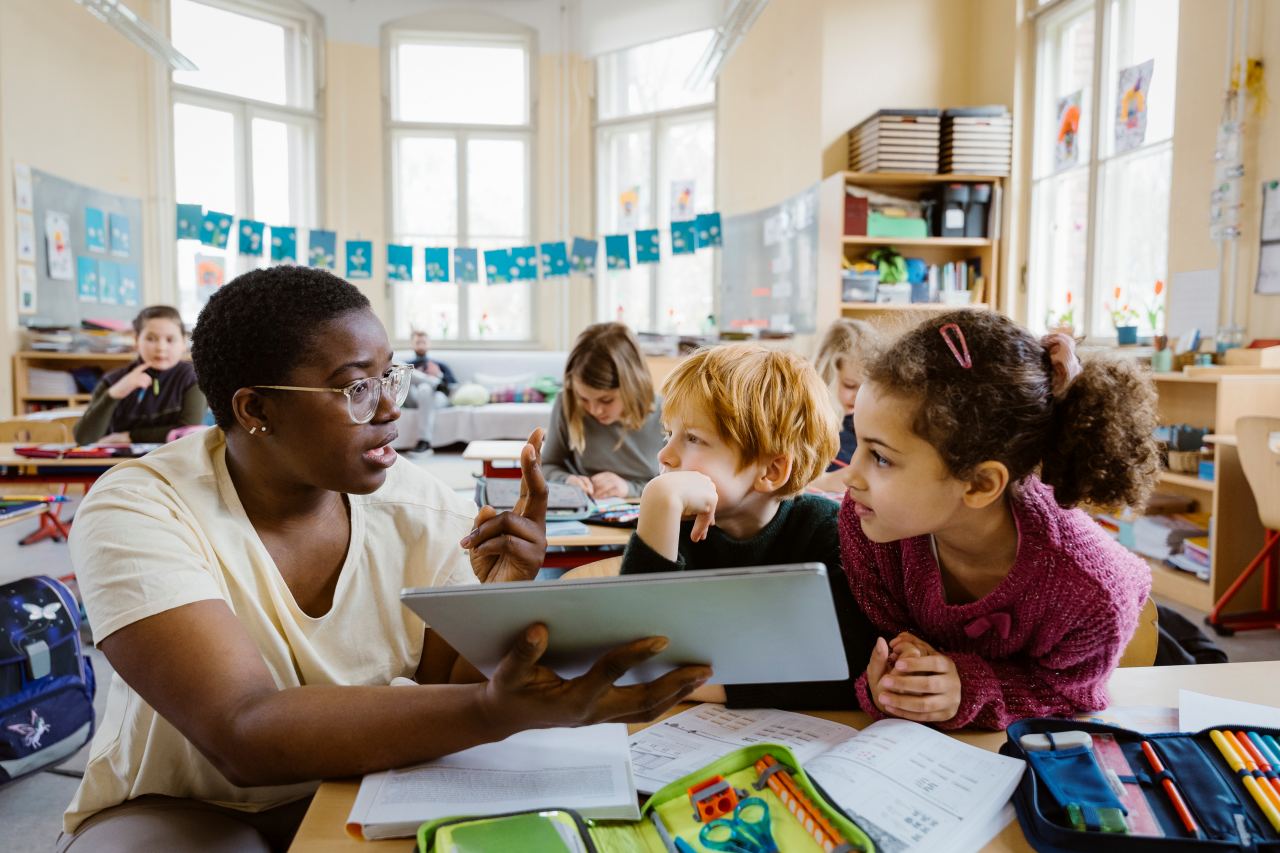Expert Primary Science Tuition Singapore for Understanding Complex Concepts
Expert Primary Science Tuition Singapore for Understanding Complex Concepts
Blog Article
A Comprehensive Overview to the Various Discovering Methods in Primary Scientific Research Guideline
The exploration of diverse discovering methods in primary scientific research guideline provides a possibility for instructors to boost student interaction and understanding considerably. By examining hands-on discovering methods, inquiry-based strategies, and collaborative strategies, we can identify effective practices that satisfy different finding out designs. In addition, the integration of technology and differentiated instruction plays a critical duty in promoting a comprehensive atmosphere. Nevertheless, the concern remains: how can these methods be effectively applied in the class to optimize their influence? The solution depends on a closer assessment of each technique and its ramifications for teaching scientific research.

Hands-On Learning Methods
Hands-on discovering methods play a crucial duty in primary science instruction, engaging students in energetic expedition and trial and error. These approaches permit students to connect directly with products and sensations, promoting a much deeper understanding of scientific ideas. By utilizing manipulatives, designs, and real-life experiments, educators create an environment where students can observe, hypothesize, and examine their concepts.
Such methods not only enhance comprehension but likewise grow vital thinking and problem-solving abilities. When trainees participate in tasks like constructing simple machines, planting seeds, or conducting chemical responses, they are encouraged to ask inquiries and look for solutions with their very own observations. This experiential approach aids to demystify intricate clinical concepts, making them extra relatable and accessible.
Additionally, hands-on understanding advertises cooperation among peers, as pupils usually function in teams to perform experiments or share searchings for. This teamwork not only enhances their knowing experience yet likewise develops necessary social skills. Inevitably, integrating hands-on strategies in main scientific research direction cultivates a long-lasting love of understanding and curiosity concerning the environment, laying a solid foundation for future scholastic pursuits in science and beyond.
Inquiry-Based Discovering
Inquiry-based understanding is a training approach that urges students to ask concerns, investigate phenomena, and create their very own understanding of scientific ideas. This technique moves the emphasis from typical teacher-led instruction to a much more student-centered experience, where students take the initiative in their academic trip. By cultivating curiosity, inquiry-based discovering advertises deeper engagement with the product, permitting students to explore topics in a purposeful context.
In technique, this approach commonly includes hands-on experiments, monitorings, and essential thinking activities that line up carefully with the clinical approach. Pupils are urged to formulate theories, layout examinations, and analyze data, which cultivates vital skills such as logical and analytic thinking. The function of the instructor in this structure is to promote expedition, leading pupils via the questions procedure while urging independent idea and cooperation.
In addition, inquiry-based understanding supports a feeling of possession over the discovering process, inspiring students to pursue knowledge proactively. This approach not only enhances understanding of clinical principles yet likewise promotes a lifelong love for learning, equipping pupils with the abilities needed to browse a progressively complicated globe.
Collaborative Understanding Approaches
Collective learning techniques equip trainees to engage in meaningful communications with peers, cultivating a common duty for their academic end results. In main science instruction, these approaches motivate learners to collaborate to explore scientific concepts, address issues, and conduct experiments (primary science tuition Singapore). By joining group tasks, students can utilize diverse point of views, permitting richer understanding and retention of scientific expertise
One trick element of joint knowing is the focus on communication skills. Pupils must verbalize their ideas, listen actively to others, and work out concepts, all of which are essential competencies in both scholastic and real-world contexts. This social interaction not only improves their understanding of clinical principles however additionally promotes synergy and problem resolution skills.
When students see the worth of their payments within a team, they are a lot more likely to take ownership of their learning journey. In general, integrating collaborative learning strategies in key scientific research direction cultivates a vibrant discovering atmosphere that prepares students for future scholastic and social obstacles.
Modern Technology Combination in Scientific Research
The integration of innovation in primary scientific research direction enhances finding out experiences by giving innovative tools and sources that support various training techniques, consisting of collaborative understanding - primary science tuition Singapore. Visit Website The usage of digital systems, simulations, and interactive applications permits pupils to engage deeply with scientific principles, facilitating an extra hands-on method to learning
Online laboratories, for circumstances, enable learners to conduct experiments securely and efficiently, promoting inquiry-based knowing. These tools can simulate real-world scientific situations, permitting trainees to picture complex processes that would be tough to reproduce in a traditional class setup. In addition, technology cultivates interaction and cooperation amongst students, as they can share findings and interact on projects via on the internet platforms.
In addition, multimedia discussions and instructional videos can enhance lessons by providing to diverse discovering styles, making abstract ideas a lot more accessible. Information analysis devices also equip pupils to accumulate and analyze clinical data, reinforcing important assuming abilities. Overall, the calculated consolidation of technology in primary scientific research direction not only enhances engagement but likewise prepares students for a technologically advanced society, equipping them with important skills for future scientific endeavors.
Differentiated Instruction Strategies
Differentiated guideline techniques are vital for attending to the diverse needs of learners in key scientific research education. These techniques enable educators to customize their mentor techniques to fit varying abilities, passions, and finding out styles within the classroom. By using separated direction, teachers can develop a comprehensive atmosphere that fosters involvement and improves understanding of scientific principles.
One reliable technique is to use adaptable grouping, which permits trainees to collaborate with peers at comparable skill degrees or with varying viewpoints. This method urges peer discovering and promotes essential thinking. In addition, using choices in tasks can empower pupils, allowing them to choose tasks that resonate with their passions while still satisfying curricular purposes.
In addition, integrating tiered assignments is one more valuable method. By designing jobs with varying degrees of complexity, instructors can ensure that all trainees are suitably challenged, no matter their effectiveness. Using developmental analyses to assess understanding additional makes it possible for teachers to change their training approaches dynamically, guaranteeing that each student obtains the assistance they need.
Eventually, carrying out set apart instruction methods in key scientific research education not only improves trainee discovering end results but also cultivates an enthusiasm for science, preparing trainees for future scholastic searches.

Verdict
In summary, effective key science guideline requires a multifaceted strategy that encompasses hands-on learning, inquiry-based techniques, and joint strategies. The assimilation of innovation and distinguished direction further satisfies diverse understanding styles, cultivating a setting for exploration and essential thinking. By applying these techniques, instructors can enhance trainee engagement and comprehension, inevitably nurturing a lifelong interest for science and query. Such detailed methodologies are necessary for developing notified and interested future researchers. link
The exploration of diverse knowing techniques in key scientific research guideline offers a chance for educators to improve student engagement and comprehension substantially.Hands-on discovering strategies play a crucial duty in key scientific research guideline, involving trainees in active expedition and trial and error.Inquiry-based understanding is an educational strategy that urges pupils to ask concerns, check out phenomena, and construct their own you can find out more understanding of clinical principles.Joint discovering techniques equip pupils to involve in significant interactions with peers, fostering a common obligation for their academic outcomes. Overall, including joint discovering methods in primary scientific research direction cultivates a vibrant discovering setting that prepares trainees for future scholastic and social difficulties.
Report this page